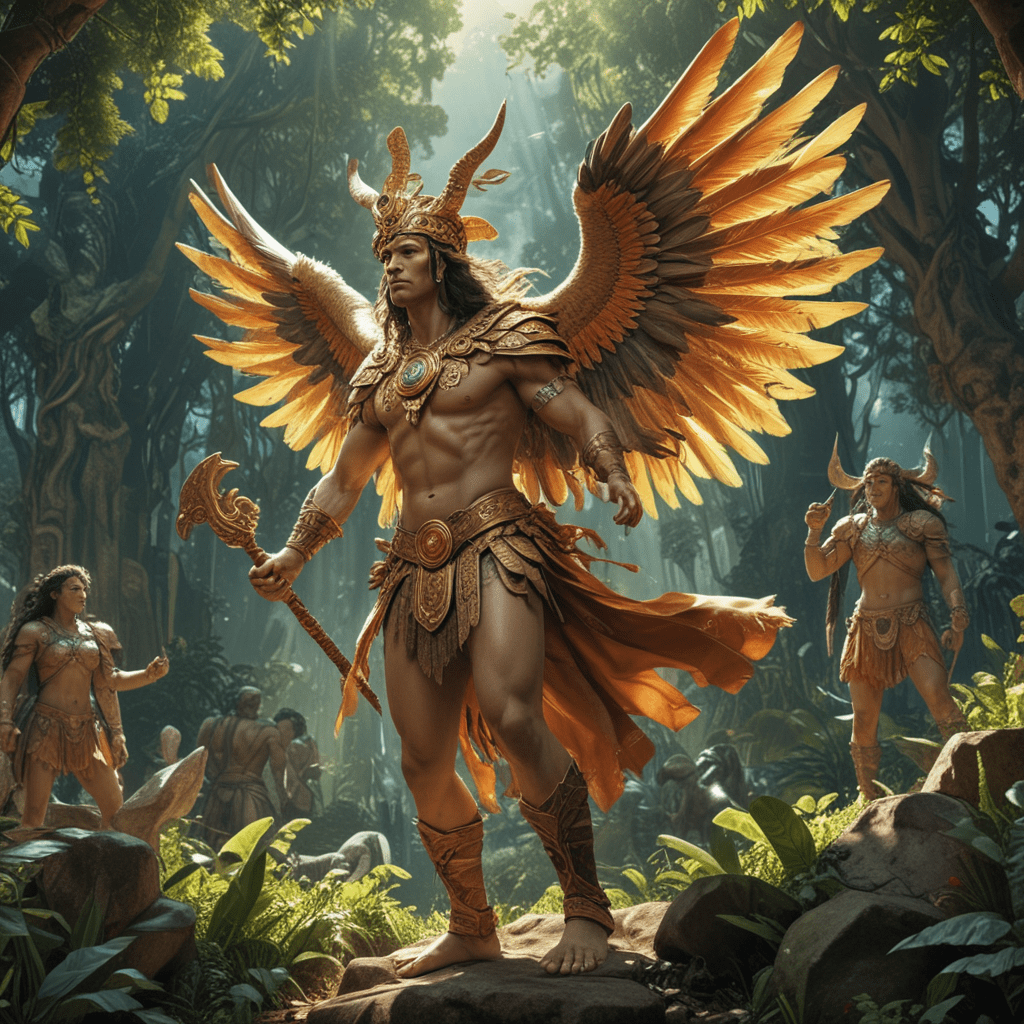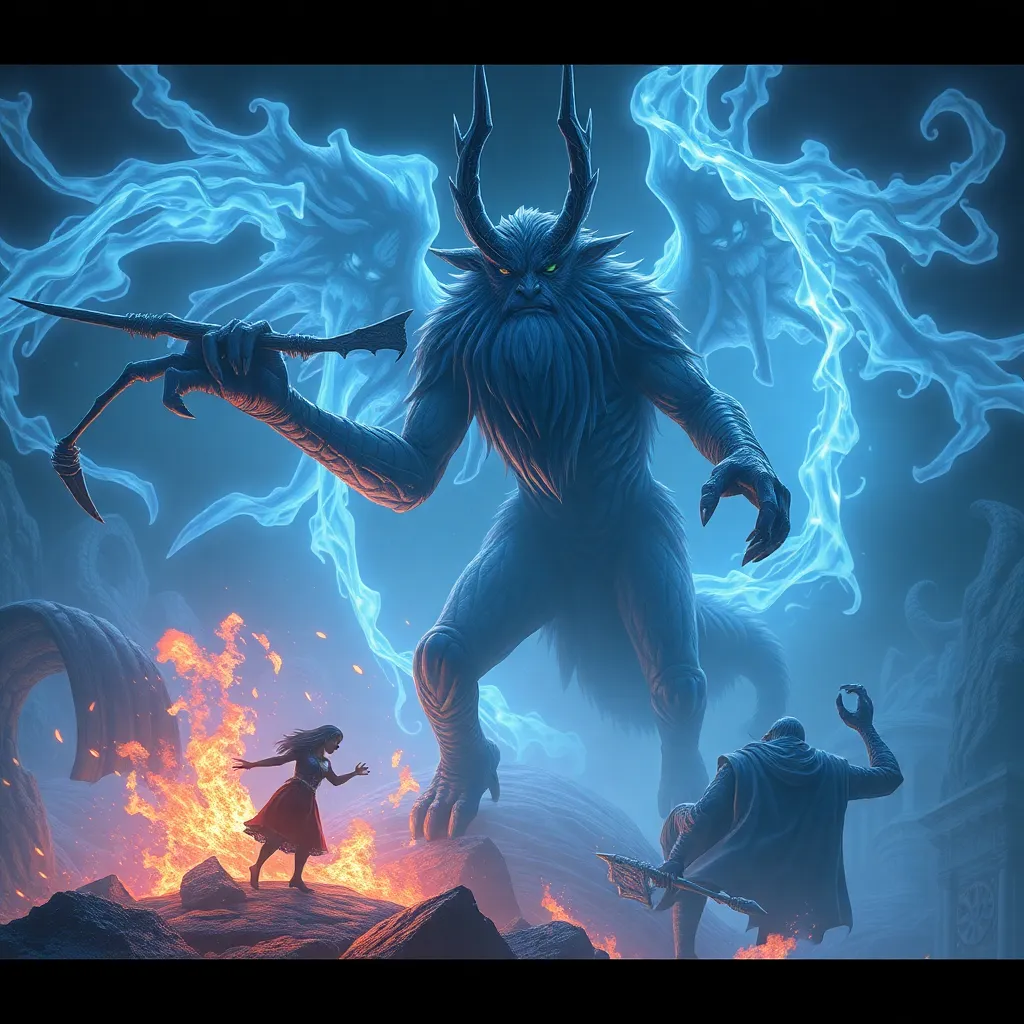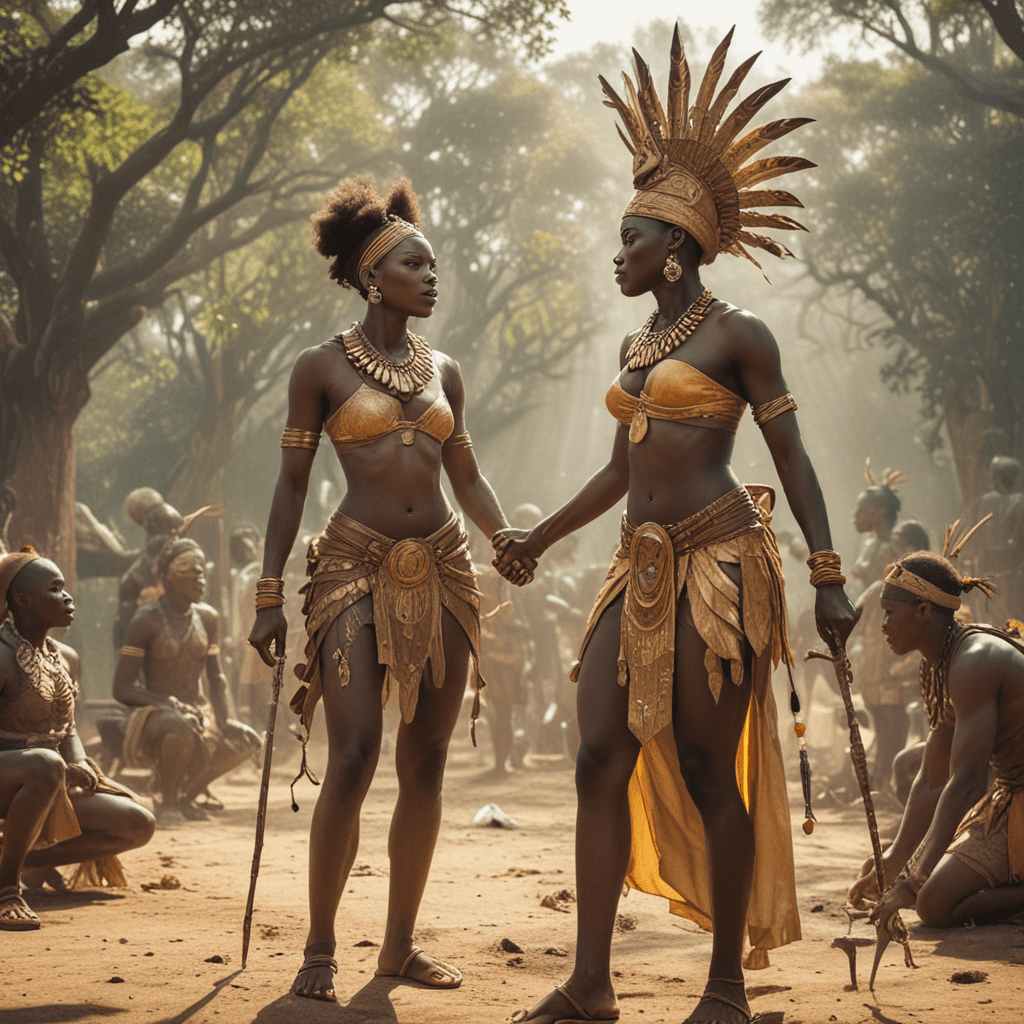South American Mythological Stories of Transformation
Introduction: The Rich Tapestry of Transformation
The vast and diverse landscapes of South America have given rise to a rich tapestry of mythological stories, many of which center around the theme of transformation. These tales delve into the profound nature of change, exploring the metamorphosis of beings from one form to another, often reflecting the deep spiritual beliefs and cultural experiences of the region's indigenous peoples. In this exploration, we will journey into a realm where the boundaries of reality blur, and the extraordinary unfolds before our eyes.
II. The Great Flood and the Transformation of Giants
One of the most prominent transformation myths in South American folklore is the tale of the Great Flood. In this epic narrative, the gods unleash a torrential downpour upon the earth, submerging everything in its path. As the waters recede, a new world emerges, but not without significant transformations. The giants who once roamed the land are reduced in size, becoming the ancestors of humanity. This transformation symbolizes the transition from a primordial age to a new era, where humans would take on the mantle of responsibility for the world.
III. The Legend of Yurupari: From Serpent to Divinity
Deep in the heart of the Amazon rainforest, the Makuna people tell the captivating tale of Yurupari. Once a fearsome serpent, Yurupari undergoes a remarkable transformation into a revered deity. Through a series of rituals and sacrifices, he ascends to the heavens, becoming a guardian of the forest and a protector of the Makuna people. This transformation represents the power of spirituality to transcend physical form and connect with the divine.
IV. The Origin of Fire: The Transformation of a Mortal into a Celestial Being
In the mythology of many South American cultures, the origin of fire is attributed to a transformative event. Among the Bororo people, the story unfolds with a young woman named Aroetoenho, who sacrifices herself to bring fire to her people. Through her act of selflessness, she transforms into a celestial being, embodying the transformative power of sacrifice and the enduring nature of the human spirit.
V. The Jaguar’s Transformation: A Symbol of Strength and Resilience
The jaguar holds a place of reverence in South American mythology, often associated with strength, courage, and resilience. In the traditions of the Guarani people, the jaguar is believed to possess the ability to transform between its animal form and a human-like shape. This transformation symbolizes the jaguar's adaptability and its capacity to navigate both the physical and spiritual realms.
VI. The Fox and the Condor: A Tale of Adaptive Ingenuity
The Andean region of South America is home to the clever fox in indigenous mythology. In a tale of adaptive ingenuity, the fox outsmarts the majestic condor by transforming into a small, harmless creature. This transformation allows the fox to escape the condor's grasp, showcasing the power of wit and resourcefulness in overcoming challenges.
VII. The Hummingbird’s Creation: From Human to Nectar Collector
Among the indigenous peoples of the Amazon, the hummingbird holds a special place in mythology. The legend tells of a beautiful young woman who, through a transformative ritual, becomes the first hummingbird. Her transformation into this tiny, nectar-collecting creature represents the connection between humans and nature, as well as the delicate balance of the ecosystem.
VIII. The Legend of Bochica: The Transformation of a God into a River
The Muisca culture of the Colombian highlands reveres Bochica, a divine being who transformed himself into a river to quench the thirst of his people. This transformation symbolizes the deity's compassion and the life-giving power of water, emphasizing the interconnectedness of the divine, nature, and humanity.
IX. The Story of Curupira: The Transformation of a Boy into a Forest Guardian
Deep within the lush forests of Brazil, the Tupi-Guarani people narrate the story of Curupira. Once a young boy who wandered into the forest, he underwent a transformation, becoming the protector of the trees and animals. Curupira's transformation represents the harmonious coexistence between humans and the natural world.
X. Conclusion: The Significance and Enduring Power of Transformation Myths
South American mythological stories of transformation offer profound insights into the beliefs, experiences, and cultural heritage of the region's indigenous peoples. These tales explore the themes of identity, spirituality, and the interconnectedness of all things. They remind us of the transformative power within ourselves and the resilience of the human spirit. As we delve into these myths, we gain a deeper appreciation for the richness of human imagination and the enduring power of storytelling.
FAQs:
Q: What is the significance of transformation in South American mythology?
A: Transformation in South American mythology symbolizes change, adaptation, and the interconnectedness of all beings.
Q: How does the jaguar's transformation reflect its role in the ecosystem?
A: The jaguar's ability to transform between realms represents its adaptability and guardian role for both the physical and spiritual worlds.
Q: What does the hummingbird's creation story convey?
A: The hummingbird's creation story emphasizes the delicate balance of nature and the connection between humans and the environment.
Q: Why is the story of Curupira important to the Tupi-Guarani people?
A: Curupira's story highlights the harmonious coexistence between humans and the forest, reinforcing the importance of respecting nature.



